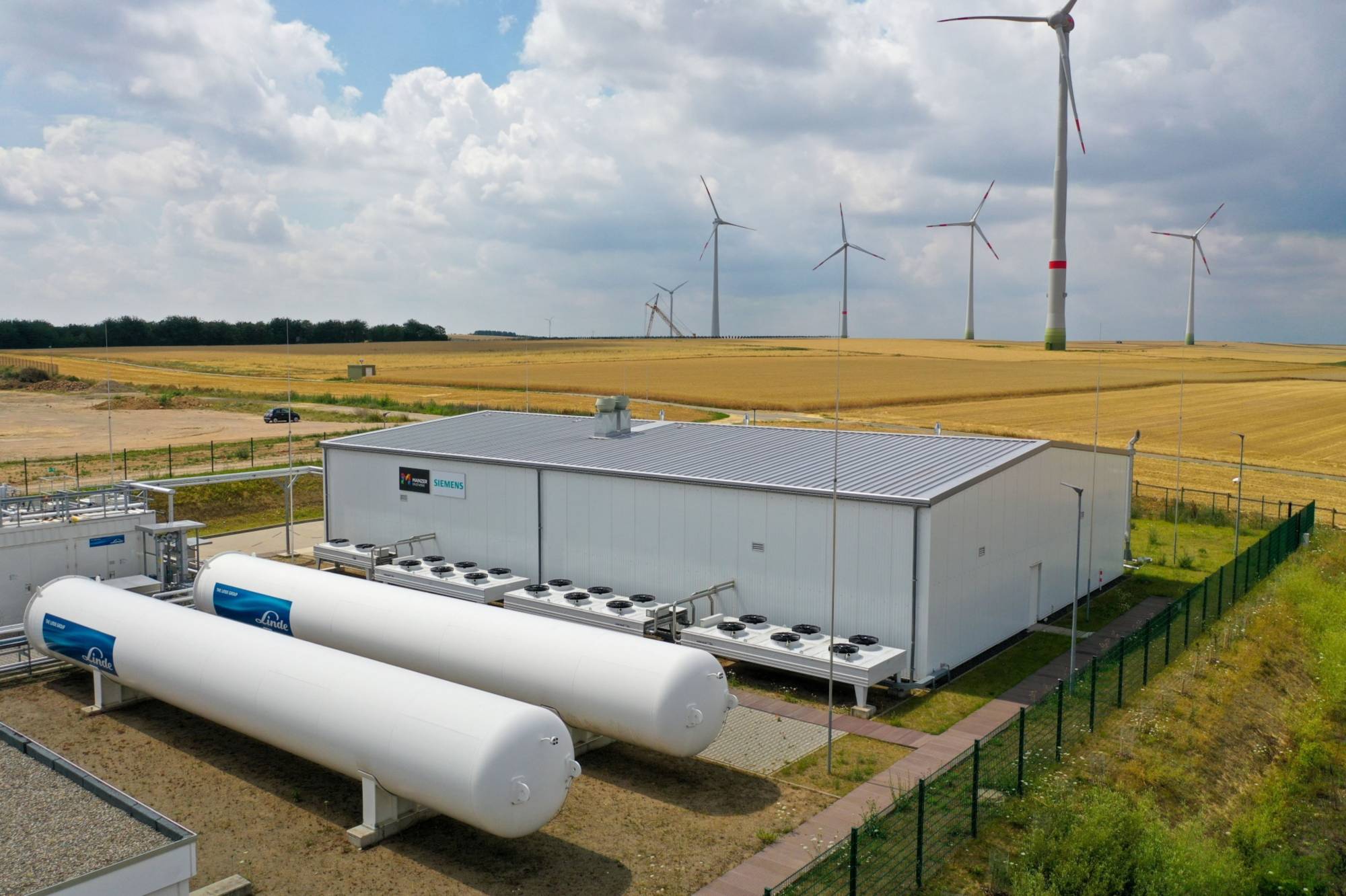A decade ago, China used low prices to dominate solar manufacturing, wiping out Western competitors just as worldwide demand for panels started to soar. The U.S. and Europe are determined not to let the same thing happen with hydrogen.
As the world sprints to decarbonize, the next round of competition revolves around a device called an electrolyzer. Plug these into clean electricity such as solar power, and it's possible to extract hydrogen from water without producing any planet-warming emissions. That's a crucial step in creating a green fuel capable of decarbonizing such industries as steel, cement or shipping.
Companies around the world are already revving up electrolyzer production, green hydrogen plants are under construction, and the industry is finally making the leap from pilot projects to industrial scale. BloombergNEF, a clean energy research group, estimates worldwide electrolyzer production will need to grow 91 times larger by 2030 to meet demand. But many Western clean tech veterans eye the emerging competition with a queasy feeling of déjà vu. More than 40% of all electrolyzers made today come from China, according to BNEF.



